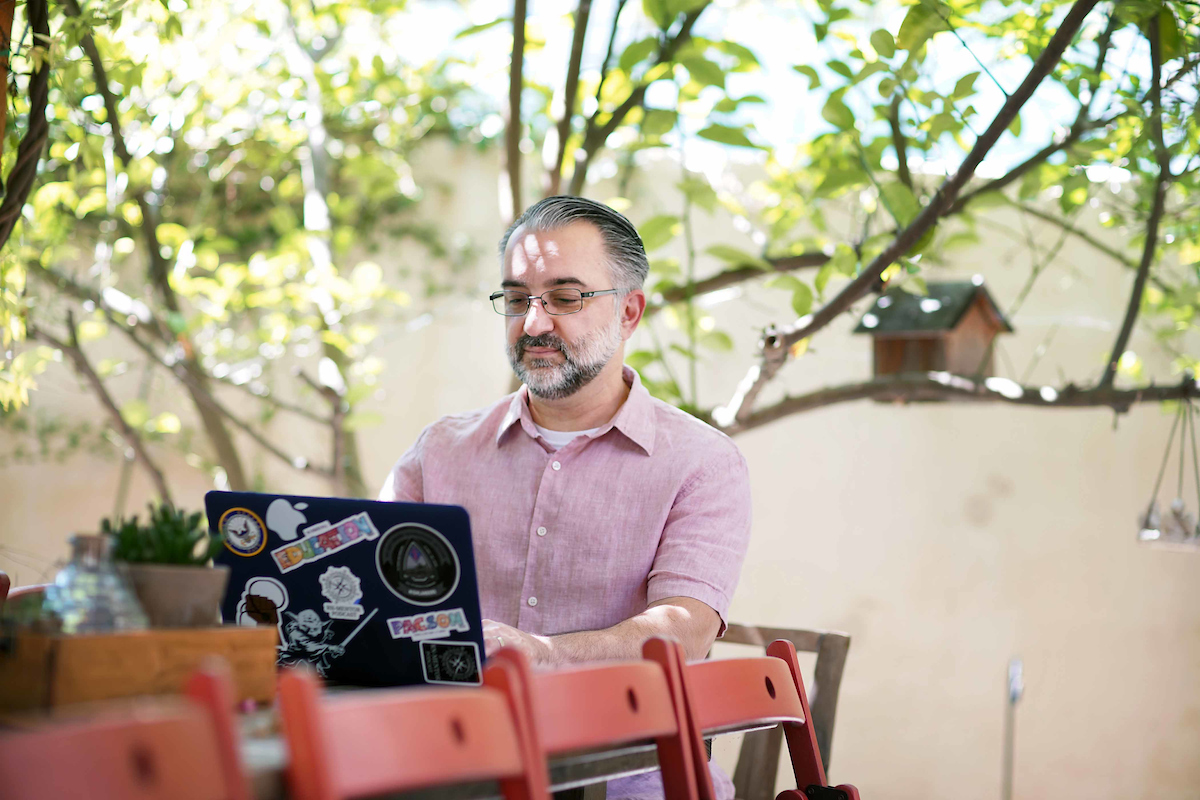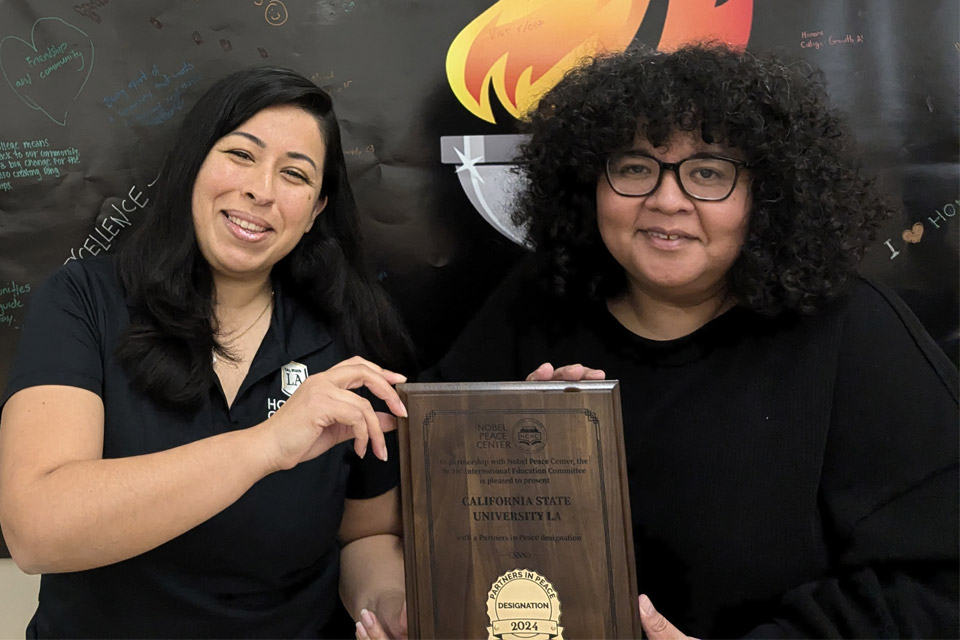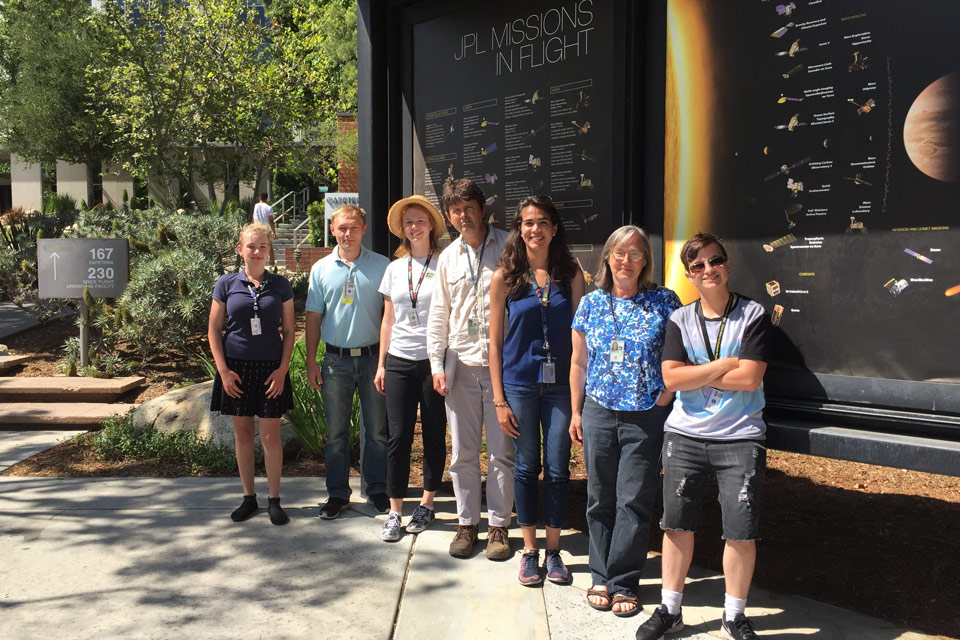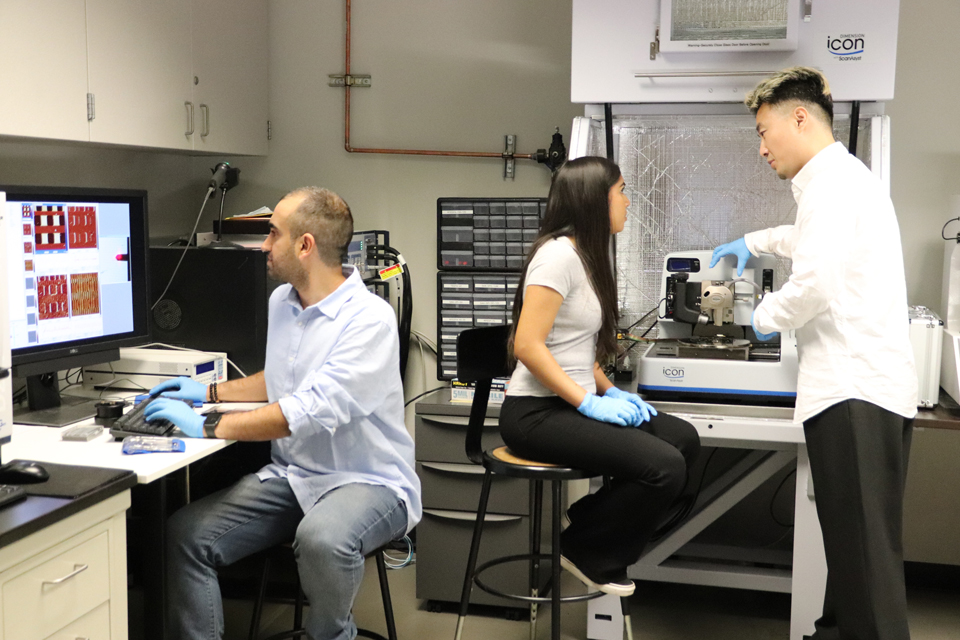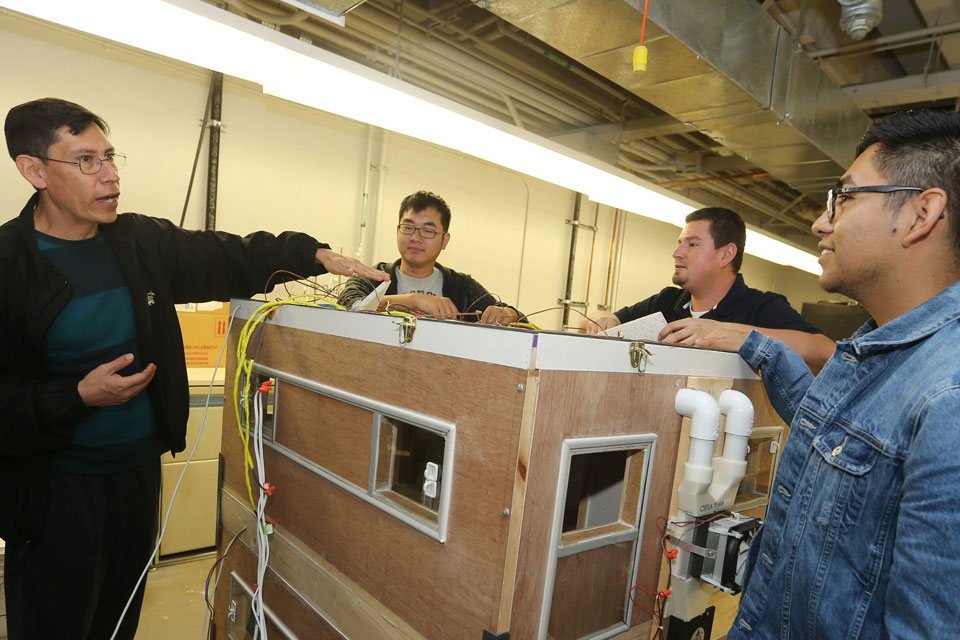Cal State LA faculty are preparing innovative courses to engage students in a virtual environment during the fall semester.
Many are taking part in workshops offered by the university’s Center for Effective Teaching and Learning (CETL) to pick up creative new strategies to incorporate into their courses.
CETL’s Alt-Instruction certificate program and accompanying Summer Institute aim to help faculty convert traditional face-to-face courses to virtual environments using effective practices that engage students and build community.
“I am excited that our faculty are rapidly adopting these [virtual instruction strategies]—it is an opportunity for creative disruption,” said Catherine Haras, senior director for CETL. “I think out of it will come a shared experience for what we mean about a high-quality online environment for our students.”
RELATED:
Faculty innovation in the virtual classroom: Q&A with Socorro Orozco, Charter College of Education
To complete the Alt-Instruction program, faculty take five core workshops and one elective through webinars and self-paced modules. Topics include teaching reading and writing remotely, online quizzes and exams, building community within their courses and leveraging multimedia.
Faculty then put theory into practice by building out their fall courses in Canvas, the university’s learning management system, using CETL templates and strategies. Instructors who complete the workshops, create their Canvas courses, and are teaching in the fall are eligible for a one-time support stipend of up to $2,000 as part of the Summer Institute, which was announced by the Los Angeles Chapter of the California Faculty Association and the Office of the Provost.
More than 1,200 instructors have enrolled in at least one of the workshops since the program launched in April, Haras said. Nearly 400 faculty have so far completed all the workshops required for the certificate as of July 7 and are moving on to the Summer Institute.
One workshop, delivered as a live webinar, encourages a mix of synchronous and asynchronous methods, meaning activities requiring real-time interactions (such as a live Zoom lecture) versus those that do not (like an online discussion board). The webinar also recommends creative uses of multimedia and other resources to enhance student learning during virtual instruction.
Ali Tayyeb, an assistant professor in the Patricia A. Chin School of Nursing in the Rongxiang Xu College of Health and Human Services, praised the CETL workshops for helping him rethink his approach to delivering effective instruction to students in a virtual environment.
Tayyeb completed all of the workshops for the Alt-Instruction certificate and is now working on designing the Canvas pages for his fall courses, which include nursing research, nursing leadership and ambulatory care nursing. He is incorporating multimedia into his courses, including podcast interviews that he conducts with national nursing leaders to enable his students to learn from top practitioners in the field.
“This experience provides opportunities for us to be more innovative and think outside of the box,” said Tayyeb, a U.S. Navy veteran and a double alumnus of Cal State LA.
Professor Kimberly Persiani, chair of the Division of Curriculum and Instruction in the Charter College of Education, is using strategies learned from the CETL workshops to prepare courses for student teachers she will be supervising in the fall.
Using technological tools, such as new features in Canvas and classroom simulations, Persiani will help guide and evaluate aspiring teachers as they instruct students in communities across Los Angeles, whether they are delivering remote, in-person or hybrid instruction in their schools.
In her role as chair, Persiani has also encouraged faculty in her division to enroll in the CETL workshops. “It makes me really proud of our faculty who are taking the time this summer to take these courses,” she said.
The CETL programming is open to all faculty at Cal State LA, a scale many other universities are unable to reach, said Haras, who serves as president of the California State University’s Faculty Development Council.
CETL will be contributing its four self-paced modules from the Alt-Instruction program to the CSU’s Institute for Teaching and Learning to assist teaching and learning center directors at other CSU campuses who may not have the staff or resources to create such programming for their faculty, Haras said.
Under Haras’ leadership over the past nine years, the center has developed robust workshop offerings and certificate programs to equip faculty with professional development to continually improve their instruction. In June 2019, the Western Association of Schools and Colleges (WASC) Senior College and University Commission called CETL a national model for faculty development when the commission reaffirmed the university’s accreditation.
CETL’s programming and resources were vital for many faculty during the transition to alternative instruction in March.
Olaseni Sode, an assistant professor in the Department of Chemistry and Biochemistry in the College of Natural and Social Sciences, said a redesigned and robust Canvas course template and strategies from previous CETL workshops helped smooth the transition to virtual instruction for him and for his students.
“I don’t know what it would have been like without a lot of the CETL instruction,” Sode said. “It would have been a lot harder, a lot less fluid and more difficult for the students.”
In the fall, Sode is teaching undergraduate and graduate courses in chemistry and plans to incorporate interactive polls as well as continuing to use community classroom agreements, which he learned from a CETL workshop on teaching large classes. Community classroom agreements help foster inclusive classrooms while also increasing engagement, Sode said, by having the students come up with and agree on rules they will abide by as a class, such as showing respect for others and practicing active listening.
Haras is optimistic that the strategies from the Alt-Instruction programming will have positive impacts on teaching even after face-to-face instruction resumes. The goal is to provide quality instruction, regardless of the environment.
“All of teaching and learning is about constructing an environment for students, a place where students feel safe and can learn and bring their best selves,” she said.
Cal State LA Executive Vice President Jose A. Gomez applauded the efforts of faculty to provide high-quality virtual instruction to students.
“We are proud of our faculty for their continued commitment and dedication to the success of our students during this unprecedented time,” Gomez said.
# # #
California State University, Los Angeles is the premier comprehensive public university in the heart of Los Angeles. Cal State LA is ranked number one in the United States for the upward mobility of its students. Cal State LA is dedicated to engagement, service, and the public good, offering nationally recognized programs in science, the arts, business, criminal justice, engineering, nursing, education, and the humanities. Founded in 1947, the University serves more than 26,000 students and has more than 250,000 distinguished alumni.
Cal State LA is home to the critically-acclaimed Luckman Fine Arts Complex, Pat Brown Institute for Public Affairs, Hertzberg-Davis Forensic Science Center, Hydrogen Research and Fueling Facility, Billie Jean King Sports Complex and the TV, Film and Media Center. For more information, visit www.CalStateLA.edu.

